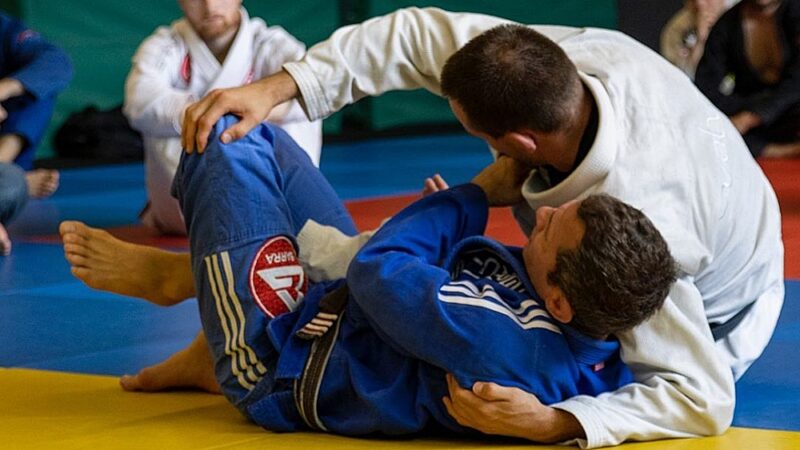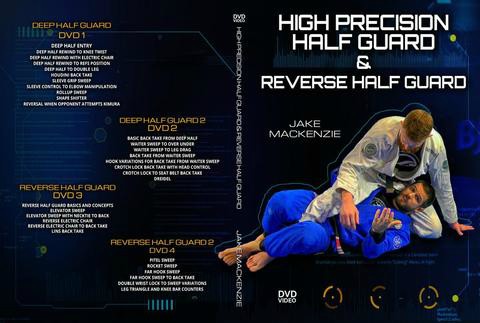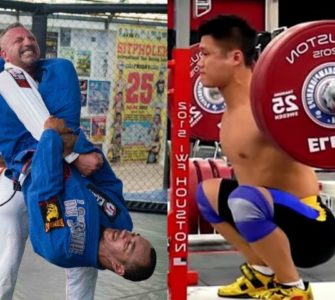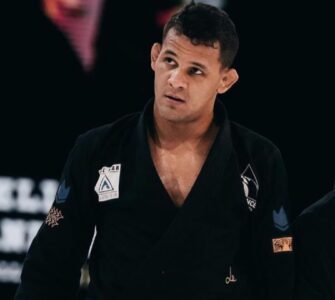Guest post by Evolve MMA, Asia’s premier championship brand for martial arts. It has the most number of World Champions on the planet. Named as the #1 ranked martial arts organization in Asia by CNN, Yahoo! Sports, FOX Sports, Evolve MMA is the top rated BJJ gym in Singapore.
Playing guard is one of the most technical aspects of Brazilian Jiu-Jitsu. Becoming proficient with the guard takes countless hours of commitment; this includes many months of trial and error, adjustment, and getting smashed. Exploring the best guard for your game is a critical step in becoming a better grappler. In this article, we will talk about an effective yet underutilised position: the reverse half guard.
The Three Types Of Guards In BJJ
Primarily, there are three types of guards in Jiu-Jitsu:
1) Closed Guard
The closed guard is usually the first type of guard taught to beginners. It is when the guard player traps the opponent by having both feet crossed and their legs wrapped around the opponent’s waist to control and manage the distance. This is the premier guard for self-defence situations and mixed martial arts.
2) Open Guard
The open guard is a blanket term for guards where your feet are not wrapped around the opponent’s waist. There are numerous open guards in Jiu-Jitsu. Typical examples include De La Riva, spider, lasso, and butterfly guard, to name a few. Open guards are performed by framing or wrapping against the opponent’s hips, limbs, sleeves, or lapel.
3) Half Guard
The half guard is a guard where you block one leg against your opponent’s to keep them in place. The half guard has many variations, each with varying strengths and weaknesses. Previously used to prevent the opponent from passing and advancing to side control, the half guard is now commonly used as an offensive position where you can attack with sweeps, back takes, armlocks, and leg entanglements. The reverse half guard comes into play whenever the opponent backsteps from the top half guard.
The Reverse Half Guard
The reverse half guard can be a favourable position if you know how to play your cards correctly. As much as it can turn the tide to your advantage, it can also put you at risk of getting passed, even submitted.
The reverse half guard position starts from the basic half guard. Having control over one of the opponent’s legs and trapping it in half guard forces the opponent to react by attempting a pass. The opponent has different passing options from the top half guard, such as doing a knee cut or pressure pass by dropping their weight on your upper body and isolating your head and arms. As previously mentioned, an effective half guard lets you wrestle up, execute sweeps, or enter leg entanglements.
Another way the opponent may react is by backstepping from the top half guard. Doing this movement puts them in your reverse half guard. Like the half guard, the reverse half guard allows you to trap and retain control over the opponent’s leg and hip, allowing you to attack or work on your escapes to improve your position.
Reverse Half Guard Sweep
One of the many options an opponent can do is to backstep from the top half guard. Once the opponent does this, it immediately puts them in position to enter the inside sankaku and attack with the heel hook. As soon as the opponent back steps from your half guard, cross your legs (like a triangle) to prevent your bottom leg from getting caught in a knee bar.
Once your bottom leg is free from the threat of a knee bar and the opponent has stabilised their position, switch your triangle control on the inside, putting your bottom leg over your top leg. Rotate your hips and tuck your top hand under the opponent’s top leg (the leg trapped in the reverse half guard) to catch their lapel. The sweep is about getting your top hand under the opponent’s trapped leg to grab their lapel.
Rotating your hips up and out puts pressure on their knees and creates space for your top hand to fit under the opponent’s trapped leg, especially when they try to pressure you with their weight. Once you’ve grabbed the lapel, you can use your bottom hand to capture the collar behind the neck. Unlock your half guard and put your top foot under the opponent’s trapped ankle. Doing so puts the opponent in a cradle-like position. Rotate your body back down to sweep the opponent. This is a super strong technique and will catch many off-guard.
Linking The Reverse Half Guard
The reverse half guard can be linked to other techniques like the trusty De La Riva guard. Assuming the opponent has a cross face from the top position with some forward pressure, force your forearm underneath their head and frame away by pushing on their shoulder and bicep. Unlock your half guard and hip out. Use this to transition to the De La Riva guard by extending your bottom leg in front of the opponent’s top hip. Place your top leg on top of your bottom leg and recover back to guard, or invert underneath by doing a berimbolo to take the opponent’s back.
If you are turned in while your leg is on the far side and the opponent performs a reverse kesa gatame (with their leg trapped inside your half guard), their hips are still not too far back. Reach for the opponent’s far hip with your bottom hand and use your top hand to pull on their lat to keep their hips close. You can unlock your half guard from here and keep your bottom leg on the mat. Maintain active hooks and post your bottom elbow above your head. Shoot your bottom leg from below and behind the opponent’s back and start taking their back.
Conclusion
Becoming an excellent guard player is a goal that every serious grappler should strive for. Learning and mastering the guard takes time and requires many hours of work. The reverse half guard is a great position to develop, and a must-learn for half guard players. We encourage you to try the position and let us know how it goes.
For more on the high level half guard game from one of the most successful Canadian BJJ competitors in history, Jake Mackenzie, you will want to check out his “High Precision Half Guard and Reverse Half Guard” instructional here!



















